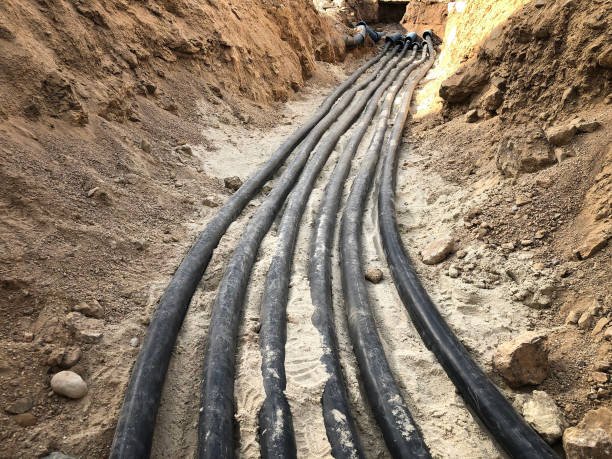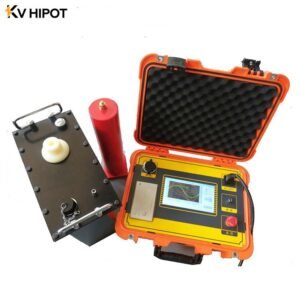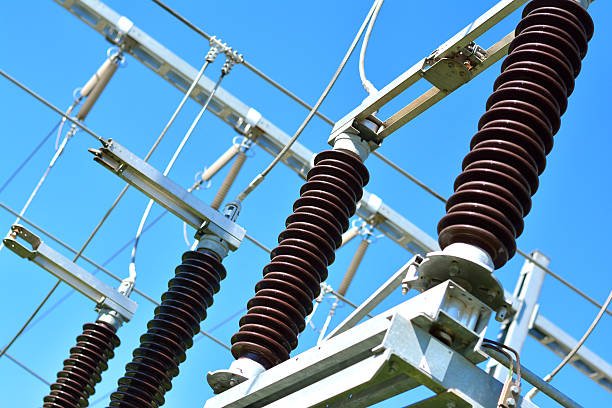Dans le monde complexe de l'ingénierie électrique, la fiabilité et l'intégrité des câbles haute tension (HT) et moyenne tension (MT) sont d'une importance capitale. Ces câbles, souvent considérés comme les lignes de vie de notre infrastructure électrique moderne, jouent un rôle essentiel en assurant une alimentation électrique régulière des villes, des industries et des habitations. Compte tenu de leur importance, la détection et la rectification des défauts dans ces câbles sont cruciales. Cet article se penche sur une étude de cas mettant en évidence la détection réussie de défauts dans des câbles HT/MT à l'aide de tests à très basse fréquence (VLF) et explore les caractéristiques des tests de câbles VLF et leurs applications dans des cas concrets.

Le défi des câbles HT/MV
Les câbles HT/MT, de par leur conception et leur application, sont exposés à diverses contraintes environnementales et opérationnelles. Des fluctuations de température aux dommages physiques, de la pénétration de l'humidité à la dégradation de l'isolation, ces câbles sont exposés à une myriade de défis. La détection des défauts, en particulier à un stade précoce, peut permettre d'éviter des défaillances catastrophiques, de minimiser les temps d'arrêt et de réaliser des économies substantielles.

VLF Câble Essais
Le test de câble VLF, qui signifie test à très basse fréquence, a changé la donne dans le domaine de la détection des défauts de câble. Contrairement aux méthodes d'essai traditionnelles qui fonctionnent à des fréquences de puissance (50/60 Hz), les essais VLF fonctionnent à des fréquences beaucoup plus basses, généralement comprises entre 0,01 et 0,1 Hz.
Testeur de câble VLF Hipot Caractéristiques

- Large gamme de fréquences : Les testeurs VLF hipot peuvent fonctionner sur une gamme de très basses fréquences, ce qui permet de tester avec souplesse différents types et longueurs de câbles.
- Sécurité et réalité : faible connexion entre l'unité de contrôle et le booster HV et performance réalisable en toute sécurité
- Réduction des contraintes sur les câbles : En opérant à de très basses fréquences, les tests VLF soumettent les câbles à un stress électrique beaucoup moins important, réduisant ainsi le risque de causer des dommages supplémentaires pendant le test.
- Haute sensibilité : Les testeurs VLF hipot sont conçus pour détecter même les défauts mineurs, ce qui les rend incroyablement efficaces pour la détection précoce des défauts.
- Portabilité : Les testeurs VLF hipot modernes sont compacts et portables, ce qui les rend adaptés aux tests sur site dans divers endroits.
- Technologie avancée : Adopte la technologie de la fréquence variable numérique et de la commande par micro-ordinateur. Il réalise l'élévation, la réduction, la mesure et la protection de la tension de manière entièrement automatique, ainsi que l'intervention manuelle dans le processus d'élévation automatique de la tension.
Application des testeurs VLF Hipot sur les câbles HT/MT
Compte tenu des défis associés aux câbles HT/MT, les testeurs VLF hipot ont trouvé une large application dans.. :
Tests préalables à la mise en service : Avant que les nouvelles installations de câbles ne soient mises sous tension, le test VLF garantit que les câbles sont exempts de défauts de fabrication ou d'installation.
Contrôles d'entretien de routine : Pour les câbles plus anciens ou exposés à des environnements difficiles, des tests VLF périodiques permettent de contrôler l'état de l'isolation et de détecter les défauts émergents.
Après les réparations : Après toute réparation, le test VLF permet de s'assurer que la réparation a été effectuée avec succès et que le câble est apte à fonctionner.
Étude de cas :
Une entreprise renommée spécialisée dans les énergies renouvelables venait d'achever l'installation d'un vaste réseau de câbles HT pour sa nouvelle ferme solaire. Avant de mettre le système sous tension, elle devait s'assurer de l'intégrité et de la fiabilité de ces câbles.

Les points douloureux
Incertitude : Les câbles provenaient de différents fabricants, ce qui a suscité des inquiétudes quant à l'homogénéité de la qualité.
Des enjeux importants : Une défaillance du système après la mise en service pourrait entraîner des temps d'arrêt importants, affectant la production d'énergie et les revenus.
Problèmes de sécurité : Tout problème non détecté peut présenter des risques pour la sécurité du personnel de maintenance et de l'équipement.
Contraintes de temps : Le projet était soumis à un calendrier serré et tout retard dans la mise en service aurait eu des conséquences contractuelles.
Essais VLF Solution
Comprenant les préoccupations du client, une équipe d'ingénieurs électriciens a proposé un test complet de pré-mise en service à l'aide de testeurs VLF hipot. Ils en ont souligné les avantages :
Détection précoce des défauts : Le test VLF permet d'identifier les points faibles potentiels de l'isolation avant qu'ils ne se transforment en véritables défauts.
Sécurité : L'essai permet de s'assurer que les câbles sont sûrs et exempts de défauts de fabrication ou d'installation.
Efficacité : Les tests VLF ont pu être réalisés plus rapidement que les tests traditionnels de fréquence de puissance, ce qui a permis de respecter le calendrier serré du client.
Le processus de test
Le réseau de câbles HT a été segmenté et chaque segment a fait l'objet de tests VLF rigoureux. L'équipe a méticuleusement documenté chaque test, garantissant ainsi la transparence du processus.
La révélation
Les tests VLF ont permis de détecter des incohérences dans la qualité de l'isolation de certaines sections de câbles. Ces sections présentaient des signes précoces de dégradation potentielle, qui auraient pu entraîner des défauts majeurs après la mise en service.
La solution
Remplacement ciblé : Seules les sections de câble concernées ont été remplacées, ce qui a permis d'économiser du temps et de l'argent.
Protection renforcée : Des mesures de protection supplémentaires, telles qu'une meilleure étanchéité, ont été mises en œuvre pour se prémunir contre les facteurs environnementaux potentiels.
Formation : L'équipe sur place a été formée aux principes de base des tests VLF, ce qui lui permettra d'effectuer des contrôles de routine à l'avenir.
La décision du client d'opter pour un test VLF avant la mise en service de ses câbles HT s'est avérée inestimable. Non seulement il a assuré la fiabilité et la sécurité de son réseau, mais il lui a aussi épargné des coûts potentiels et des temps d'arrêt. Ce cas souligne l'importance des mesures préventives dans le domaine de l'ingénierie électrique et la valeur inégalée des tests VLF.





